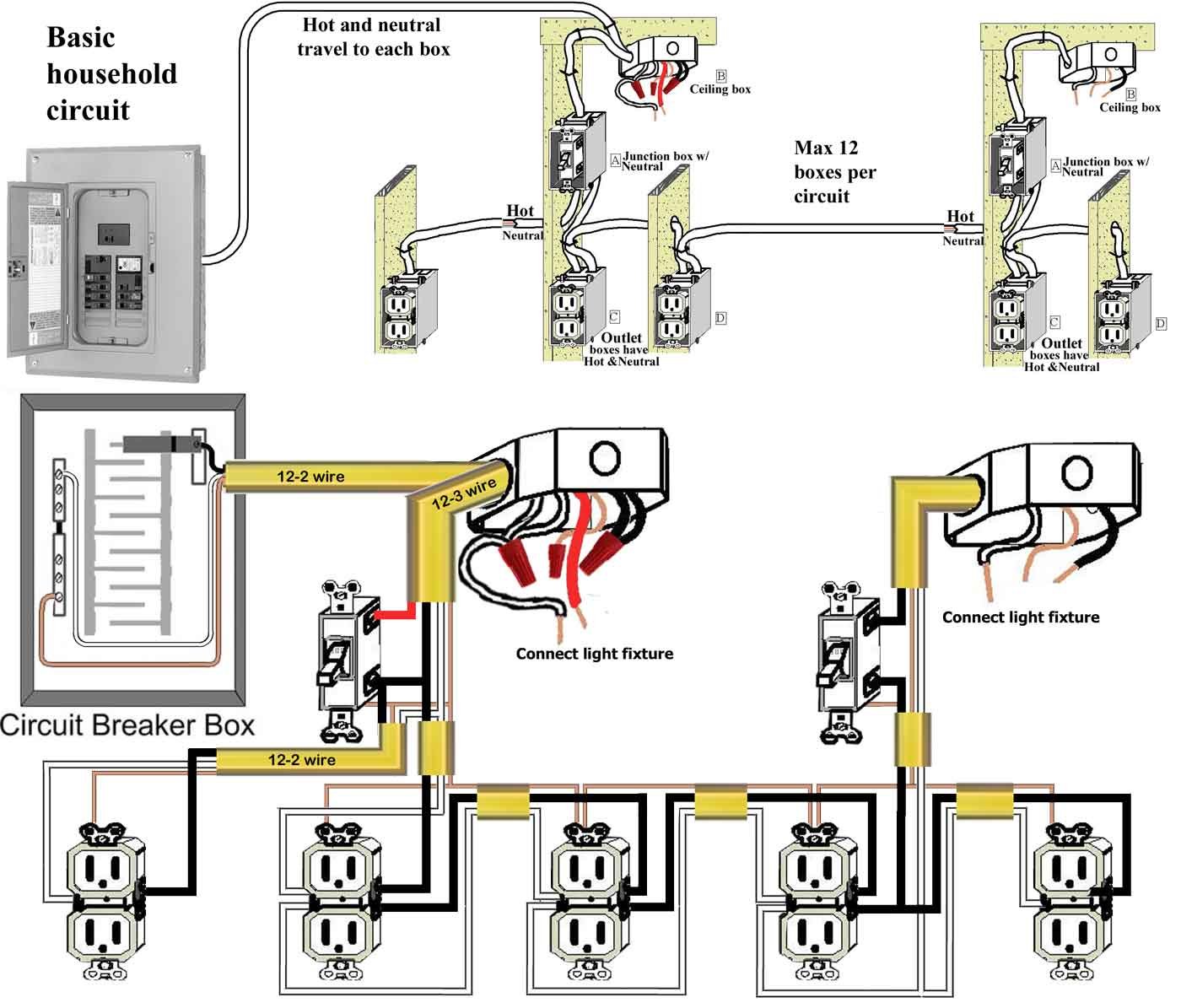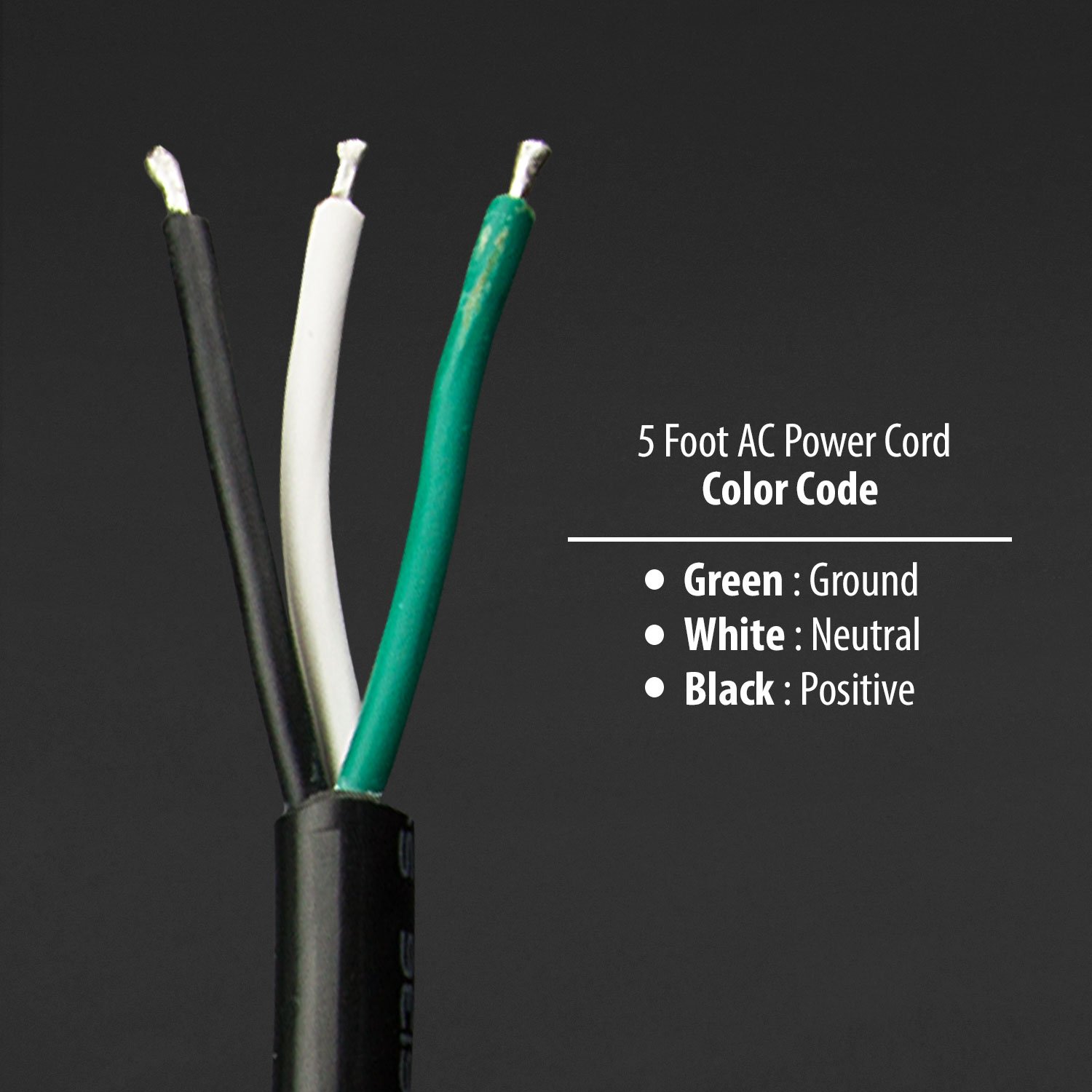Welcome to “A Comprehensive Guide to Home Wiring Code: Ensuring Electrical Safety,” your ultimate resource for understanding and adhering to the essential guidelines for home electrical systems. This guide is meticulously crafted by an experienced electrician with over a decade of expertise, providing you with invaluable insights and practical knowledge to navigate the complexities of home wiring code. By delving into the intricacies of electrical theory, code interpretation, and real-world applications, we empower you to make informed decisions, enhance electrical safety, and ensure the efficient operation of your home’s electrical system.
Key Takeaways:
- Electrical codes are essential for ensuring the safety of electrical installations in homes.
- The National Electrical Code (NEC) is widely used as the standard for electrical installations in the United States.
- Local residential electrical codes based on the NEC should always be followed.
- Electrical codes vary depending on the room and its intended use.
- New electrical installations must meet current electrical codes, while safe older wiring may not need to be updated.
Home Wiring Code

Homeowners and contractors, this guide dives into the crucial rules that govern home electrical installations.
The home wiring code is a set of standards designed to ensure the safety and efficiency of electrical systems. These regulations, often based on the National Electrical Code (NEC), are enforced in most residential areas.
Why Bother with Home Wiring Code?
- Safety First: Home wiring code protects you from electrical hazards such as fires and shocks. It ensures proper wire sizing, grounding, and overcurrent protection.
- Efficiency and Longevity: Adhering to home wiring code prolongs the lifespan of electrical components, reduces energy consumption, and optimizes their performance.
- Legal Compliance: Many insurance companies and local governments require compliance with home wiring code for new installations and renovations.
Key Principles of Home Wiring Code
- Circuit Design: Electrical circuits must be designed to handle the load without overloading, causing overheating or fires.
- Wire Selection: The home wiring code specifies the correct wire size for different circuit loads and applications.
- Grounding: Proper grounding prevents electrical shocks and damage to equipment by providing a safe path for excess electricity to return to the ground.
- Overcurrent Protection: Circuit breakers and fuses protect against excessive current flow, preventing fires and equipment damage.
- GFCI and AFCI Protection: These specialized outlets protect against shocks and electrical fires in areas such as bathrooms and kitchens.
Room-Specific Code Requirements
The home wiring code varies depending on the room’s usage. Some key requirements include:
| Room | Specific Code Requirements |
|---|---|
| Kitchen | GFCI outlets near water sources, proper range and dishwasher wiring |
| Bathroom | GFCI outlets near water sources, fan ventilation |
| Bedroom | Smoke and carbon monoxide detectors, proper lighting and outlet placement |
| Outdoor | Weather-resistant wiring, GFCI protection for outlets |
Conclusion
By following home wiring code standards, you can ensure a safe, efficient, and compliant electrical system in your home. Remember, these regulations exist to protect your family, property, and electrical equipment. Always prioritize electrical safety and consult a licensed electrician for any major electrical work.
Do you want to increase your chances of winning while playing at home? Check out our comprehensive guide on home winning odds. It covers everything you need to know to make informed decisions and maximize your winnings.
If you’re looking for a step-by-step guide on wiring your home safely and efficiently, look no further than our home wiring color code article. We’ll walk you through the entire process, from choosing the right tools to connecting the wires.
Need help with your child’s homework? Our home work for class 3 section has a wide range of resources to help them succeed in their studies. From math worksheets to science experiments, we’ve got everything you need to make learning fun and engaging.
Looking for a workout plan that you can do from the comfort of your own home? Download our free home workout plan pdf and get started on your fitness journey today. It includes exercises for all skill levels, so there’s something for everyone.
Compliance with Electrical Standards
Compliance with electrical standards is everything when it comes to home wiring. These codes are in place to keep you, your loved ones, and your property safe from electrical hazards. Plus, they also help to ensure that your electrical system runs smoothly and efficiently.
There are a number of different electrical standards, but the most relevant is the National Electrical Code (NEC). The NEC is a comprehensive set of regulations that cover everything from wiring methods to equipment installation. It’s important to note that the NEC is updated every three years, so it’s crucial to stay up-to-date on the latest changes.
If you’re not comfortable working with electricity, it’s best to hire a licensed electrician to ensure that your wiring is up to code. A qualified electrician will have the knowledge and experience to ensure that your electrical system is safe and compliant.
Key Takeaways:
– Electrical standards are in place to ensure safe and efficient electrical systems.
– The most relevant electrical standard is the National Electrical Code (NEC).
– It’s important to stay up-to-date on the latest changes to the NEC.
– If you don’t feel comfortable working with electricity, hire a licensed electrician to ensure that your wiring is up to code.
Relevant Sources:
– Electrical Code Compliance: What You Need to Know
– Residential Electrical Code Requirements
Safety Considerations and Code Enforcement
Key Takeaways:
- Enforce Safety Considerations and Code Enforcement to prevent hazards and ensure electrical system integrity.
- Qualified contractors with NEC expertise ensure compliance.
- Adhere to wiring standards for safe handling of electrical loads.
Electrical Safety in Home Wiring
Code compliance promotes safety by adhering to industry standards for:
- Circuit design: Limits load to prevent overheating and fires.
- Wire selection: Specifies correct wire sizes for different applications.
- Grounding: Provides a safe path for excess electricity.
- Overcurrent protection: Prevents excessive current flow and damage.
- GFCI and AFCI protection: Protects against shocks and electrical fires.
Code Enforcement for Electrical Safety
Enforcement ensures adherence to codes, protecting against:
- Electrical hazards
- Fire risks
- Safety violations
- Legal consequences
Ensuring Compliance:
- Engage qualified contractors licensed and insured with NEC knowledge.
- Follow wiring standards for safe installation and maintenance.
- Regularly inspect and update electrical systems to meet current codes.
Citations:
- The National Electrical Safety Code® (NESC®)
- The Complete Guide to Electrical Wiring: Tips, Techniques, and Safety
Maintenance and Troubleshooting Tips
Keep your home’s electrical system running smoothly by following these essential tips:
Routine Inspections:
- Inspect your home’s electrical wiring periodically to monitor for noticeable damage or wear.
Outdated Wiring Upgrade:
- Consider upgrading outdated wiring to modern standards to align with safety codes.
Circuit Overload Avoidance:
- Overloaded circuits can pose risks. Avoid overloading by utilizing multiple outlets and surge protectors.
Prompt Issue Resolution:
- Address any electrical issues promptly, such as faulty wiring, blown fuses, or tripped circuit breakers.
Surge Protector Utilization:
- Protect appliances and electronics from power surges by using surge protectors.
Family Education:
- Educate family members about electrical safety and the importance of reporting electrical issues.
Professional Inspection:
- Schedule regular professional inspections to ensure wiring integrity and identify potential hazards.
Key Takeaways:
- Routine inspections and maintenance can prevent electrical hazards.
- Upgrading outdated wiring ensures compliance with safety standards.
- Avoiding circuit overloads minimizes risks.
- Prompt issue resolution protects your home and family.
- Surge protectors safeguard appliances and electronics.
- Educate family members about electrical safety.
- Regular professional inspections guarantee wiring safety.
Relevant URL Sources:
- Maintenance Tips for a Home’s Electrical Wiring
- 10 Electrical Wiring Problems Solved
FAQ
Q1: How do I know if my home’s wiring is up to code?
A1: It is recommended to consult a licensed electrician for a professional inspection to determine if your home’s wiring meets current code requirements.
Q2: What are the most common electrical code violations in homes?
A2: Common violations include improper wire sizing, overloaded circuits, lack of grounding, ungrounded outlets, and improper installation of electrical devices.
Q3: What are the benefits of ensuring electrical code compliance in my home?
A3: Compliance ensures the safety and reliability of your electrical system, reduces the risk of electrical fires and accidents, and helps maintain the value of your home.
Q4: Can I make electrical repairs myself if I am not a licensed electrician?
A4: It is strongly advised to leave electrical repairs to qualified professionals. Attempting repairs without proper knowledge and experience can create safety hazards.
Q5: What are some tips for preventing electrical hazards in my home?
A5: Regularly check electrical cords for damage, avoid overloading circuits, use surge protectors, and contact an electrician promptly to address any electrical issues or concerns.
– Home Wiring Code: A Comprehensive Guide for Safe and Compliant Electrical Installations
Welcome to the ultimate guide to home wiring code: your comprehensive resource for safe and compliant electrical installations. This guide is tailored for homeowners and professionals alike, providing a deep dive into the intricacies of home wiring code. Our expert electrician with over a decade of experience will navigate you through the latest safety standards and code requirements, ensuring your electrical systems are not just functional but also up to code. Get ready to illuminate your understanding of home wiring and ensure the safety and efficiency of your electrical systems.
Key Takeaways:
- Electrical codes are crucial for safe and compliant electrical installations.
- The National Electrical Code (NEC) serves as a standardized guide for the US.
- Local residential codes have precedence over the NEC.
- Codes generally only apply to new installations, but older wiring must still be safe.
Home Wiring Code

Understanding and adhering to home wiring code is crucial for ensuring the safety and efficiency of your electrical systems. Here’s a comprehensive guide to help you navigate the intricacies of home wiring code.
Importance of Home Wiring Code
Home wiring code establishes clear guidelines for the installation, maintenance, and repair of electrical systems in residential buildings. These codes aim to prevent electrical fires, shocks, and other hazards that can compromise the well-being of occupants.
Types of Home Wiring Codes
In the United States, the National Electrical Code (NEC) serves as the basis for most home wiring code regulations. However, local jurisdictions may have additional codes that supersede the NEC in certain areas. It’s essential to familiarize yourself with the specific home wiring code requirements applicable to your region.
Key Provisions of Home Wiring Code
Home wiring code typically covers various aspects, including:
-
Wire sizing and colors: Each type of electrical wire is designated for a specific amperage and voltage. Using the correct wire size and color coding ensures proper current flow and safety.
-
Circuit breaker and fuse requirements: Circuit breakers and fuses protect electrical circuits from overloads and short circuits. The home wiring code specifies the appropriate amperage for these devices based on the circuit’s purpose.
-
Grounding and bonding: Grounding and bonding are vital for safety purposes. Home wiring code mandates that electrical systems be properly grounded and bonded to prevent electric shock and surges.
-
Outlets and switches: The placement and spacing of outlets and switches are governed by home wiring code to ensure accessibility and safety.
Steps for Following Home Wiring Code
-
Consult with a licensed electrician: If you lack experience in electrical work, it’s advisable to consult with a licensed electrician to ensure proper adherence to home wiring code.
-
Obtain necessary permits: Many jurisdictions require permits for electrical work, especially for major installations or renovations.
-
Use materials approved by the code: All electrical materials used in your home must be certified by an independent testing organization to meet the home wiring code requirements.
-
Follow the code regulations: Carefully follow the home wiring code provisions for each aspect of your electrical system, including wire sizing, connections, grounding, and more.
-
Get inspections and approvals: Once your electrical work is complete, arrange for inspections by building inspectors or licensed electricians to ensure compliance with the home wiring code.
Remember, adhering to home wiring code is not just an obligation but an investment in the safety and well-being of your home and family. By following these guidelines, you can ensure your electrical system operates efficiently and hazard-free.
1.Looking for the winning odds of home football matches? Click on home winning odds to find out all the recent home game winning odds now.
2.Want to know about the color code of electric wires and cables in your house? Know them from an expert! Refer to home wiring color code to avoid any faulty wiring issues in your living space.
3.Seeking homework help for your third grade child? Find some amazing printable worksheets by clicking on home work for class 3. They will not only enhance your kid’s learning but will also make homework fun.
4.Looking for a physical workout program without going to the gym? Click on home workout plan pdf to download a PDF format workout guide for free.
Understanding Electrical Wiring Basics
Understanding Electrical Wiring Basics
Understanding home wiring code is the key to ensuring the safety and efficiency of your electrical system. Whether you’re a homeowner looking to DIY a small project or a contractor tackling a complex installation, a basic understanding of the code can help you navigate the complexities of electrical work.
Key Components of Electrical Wiring
At the heart of electrical wiring are five key components:
- Power Source: The origin of electrical current, usually a utility grid or generator.
- Wires: Conductors that carry electricity from the power source to the loads.
- Switches: Devices that control the flow of electricity.
- Loads: Appliances, lights, or other devices that consume electricity.
- Grounding: A safety feature that provides a path for excess electricity to safely discharge.
Understanding Wire Sizing
Wire size is crucial in electrical wiring, as it determines the amount of current the wire can safely carry. The American Wire Gauge (AWG) system is used to designate wire sizes, with smaller numbers indicating larger wires.
Rules of Electrical Wiring
There are four essential rules to follow when wiring a home:
- Use the correct wire gauge: Select a wire size that can handle the current load of the circuit.
- Avoid overcrowding electrical boxes: Keep wires organized and prevent overheating.
- Use the correct wire types: Black wires for live loads, white wires for neutral loads, and green or bare wires for grounding.
- Work on dead electrical systems: Ensure power is turned off before working on electrical components.
Steps for Following Electrical Wiring Code
- Consult an electrician: Seek professional advice for complex projects.
- Obtain necessary permits: Secure permits from local authorities.
- Use code-approved materials: Ensure all materials meet safety standards.
- Follow code regulations: Adhere to the National Electrical Code (NEC) and any additional local codes.
- Get inspections and approvals: Have your work inspected by a qualified electrician for safety and compliance.
Key Takeaways:
- Electrical wiring code ensures the safety and efficiency of home electrical systems.
- Understanding wire sizing, using the correct wire types, and following the rules of electrical wiring is essential.
- Consulting an electrician, obtaining permits, and adhering to code regulations are key steps to ensure compliance.
Sources:
- The Ultimate Guide to Wiring: A Step-by-Step Tutorial for Beginners
- All About Electrical Wiring Types, Sizes, Installation
Common Code Violations and How to Avoid Them
Navigating the complex world of home wiring code can be a daunting task, but it’s essential for ensuring the safety and efficiency of your electrical system. Here’s a simplified guide to help you steer clear of common code violations:
Insufficient Receptacles:
Overloading outlets with extension cords and power strips is a major no-no. Ensure your home has ample receptacles to meet modern device demands.
Incorrect Circuit Breakers:
Install the appropriate ground fault circuit interrupters (GFCIs) in wet or damp areas like bathrooms and kitchens. This safeguards against the risk of electrical shock.
Insufficient Electrical Bonding:
Don’t leave metal materials that could become energized ungrounded. Proper bonding prevents electric shocks and ensures safe operation.
Incorrectly Covering Outdoor Receptacles:
Use the right receptacle covers in outdoor locations. Improper covers can damage the receptacles and pose electrical hazards.
Receptacles Not Tamper-Resistant:
In most areas, tamper-resistant receptacles are mandatory to prevent children from inserting objects into them, reducing the risk of electrical accidents.
Key Takeaways:
- Home wiring code is designed to protect against electrical fires and shocks.
- Understand the National Electrical Code (NEC) and any local variations.
- Proper wire sizing, grounding, and circuit protection are crucial.
- Outlet and switch placement should prioritize accessibility and safety.
- Always consult with a licensed electrician for expert guidance.
Sources:
- Common Electrical Code Violations – and How to Avoid Them
- 10 Common Electrical Wiring Code Violations (2023 Update)
Resources and Support for Code Compliance
In the realm of home electrical wiring, understanding and adhering to codes is paramount for safety and efficiency. With the ever-evolving industry, staying abreast of the complexities of home wiring code can be a daunting task.
Key Takeaways:
- Home wiring code ensures electrical installations meet safety standards, minimizing risks of shock and fire hazards.
- Compliance with these codes is essential for legal obligations and maintaining safe and efficient electrical systems.
- Resources and support are available for homeowners and professionals to facilitate code compliance.
Accessing Resources for Code Compliance
Multiple resources are available to assist in understanding and adhering to home wiring code. These resources include:
- Electrical Inspection Authorities: Local authorities provide inspections to ensure electrical installations comply with codes.
- Licensed Electricians: Certified electricians possess the expertise and knowledge to install and maintain electrical systems according to code.
- Trade Associations: Organizations like the National Electrical Contractors Association (NECA) offer training, resources, and support for professionals in the electrical field.
- Online Resources: Websites, blogs, and forums provide valuable information, articles, and discussions on home wiring codes.
How to Utilize Support for Code Compliance
Leveraging support for code compliance involves:
- Consulting with Experts: Engaging with licensed electricians or electrical inspection authorities can provide personalized guidance and ensure code compliance.
- Staying Updated with Code Changes: Regularly reviewing the latest codes and industry standards is crucial to maintain compliance.
- Utilizing Online Resources: Online forums, articles, and tutorials offer insights and support from professionals and homeowners alike.
FAQ
Q1: What is the purpose of home wiring code?
A1: Home wiring code is essential for ensuring the safe and compliant installation of electrical systems in residences. It outlines regulations and standards that dictate the proper installation of wiring, outlets, switches, and other electrical components to prevent electrical hazards like shock and fire.
Q2: Why is it important to follow home wiring code?
A2: Adhering to home wiring code is crucial for various reasons. It safeguards individuals from electrical hazards, ensures proper and efficient functioning of electrical systems, and meets legal requirements. By following the code, homeowners can create safe and reliable electrical systems in their homes.
Q3: How do I know if my home’s wiring is up to code?
A3: To determine if your home’s wiring is up to code, consider hiring a qualified electrician for an inspection. They can assess the electrical system, identify any non-compliant components, and recommend necessary upgrades to ensure safety and code compliance.
Q4: What are the most common home wiring code violations?
A4: Some common home wiring code violations include: insufficient receptacles, incorrect circuit breakers, inadequate electrical bonding, improper covering of outdoor receptacles, and the absence of tamper-resistant receptacles. Addressing these violations is essential for maintaining a safe and code-compliant electrical system.
Q5: Are there specific code requirements for different rooms in my home?
A5: Yes, home wiring code often includes specific requirements for different rooms based on their intended use and potential electrical demands. For instance, kitchens and bathrooms typically require more outlets and specialized fixtures designed for moisture-prone environments to ensure safety and functionality.
- Does 100% Polyester Shrink? A Complete Guide to Washing & Drying - April 16, 2025
- Elegant Drapery Solutions for Arched Windows: A Complete Guide - April 16, 2025
- The Best Dining Room Tables with Drop Leaves: A Buyer’s Guide - April 16, 2025










